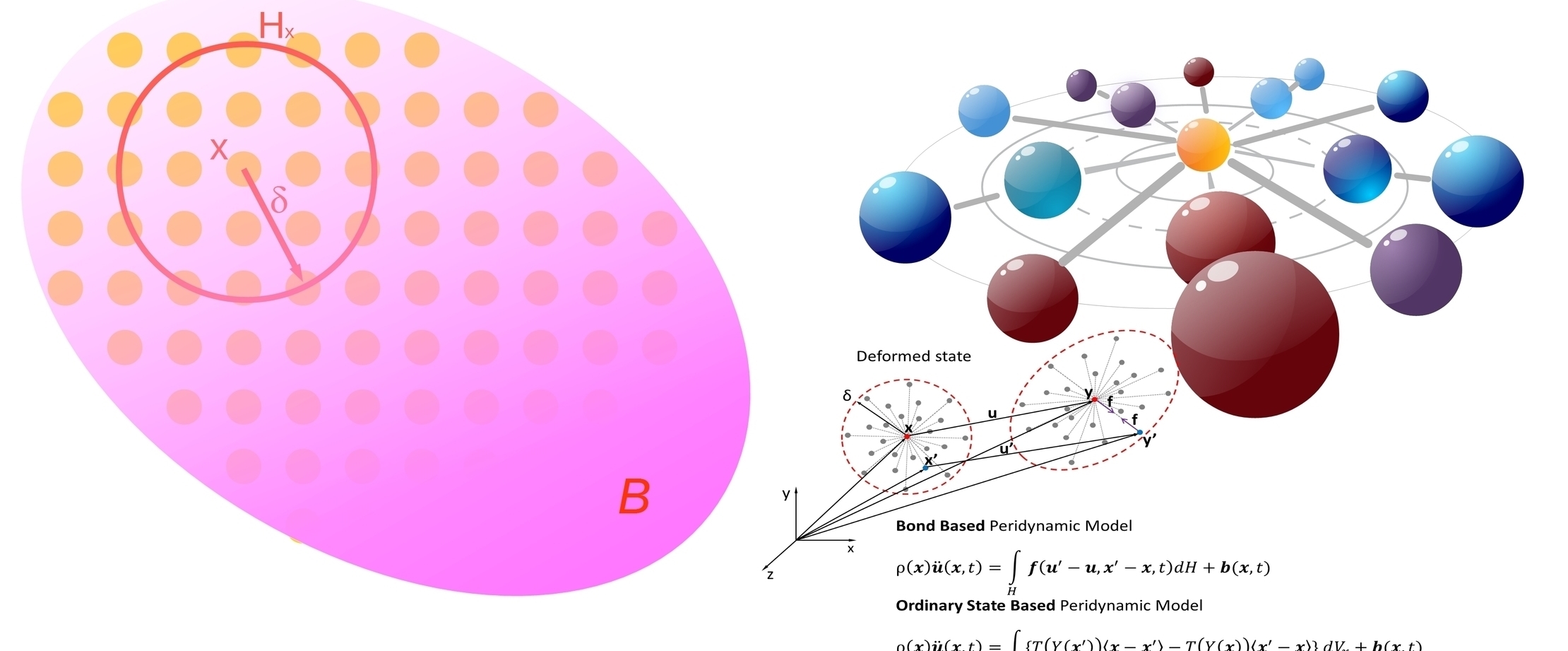
Peridynamics Study Notes 1
Basic
The classical molecular dynamics depends on the locality of material points. In peridynamics theory, each material points is identified by is coordinates xk and is associated with its incremental volume Vk and the mass density ρ(xk). Each material point may also be subjected to load, displacement, and velocity which lead to motion and deformation. In a deformaed state, a material point, xk, experiences a displacement, uk, and its location is described by its position vector, yk. The displacement and body load vector are represented as uk(xk, t) and bk(xk, t).
In the peridynamics theory, the interactions of the material point xk with the others is assumed to vanish beyond a local range, δ, called horizon. The material points within the distance δ is called the family of xk, denoted as Hxk. In the other word, it is assumed that a material point only interacts with it own family. The interactions between material points are prescribed as the micropotential that depends on the deformation and the constitutive properties of the material.
Deformation
The deformation of a material point, xk is influenced by the collective deformations of the other points. In a deformed state, the relative position vector, (xk - xj) prior to deformation became (yk - yj) after deformation. The stretch between two points xk and xj is defined as:
The displacement vectors of a material point x(k) can be stored in a vector:
Y(x(k), t) =
Force Density
The collective deformation of Hx(k) resulting in a force density vector t(k)(j) applied on the material point x(k). Similar to the displacement vectors, the force density vectors of a material point x(k) can also be stored in an array, T:
T(x(k), t) = {t(k)(1), t(k)(2), …, t(k)(n)}